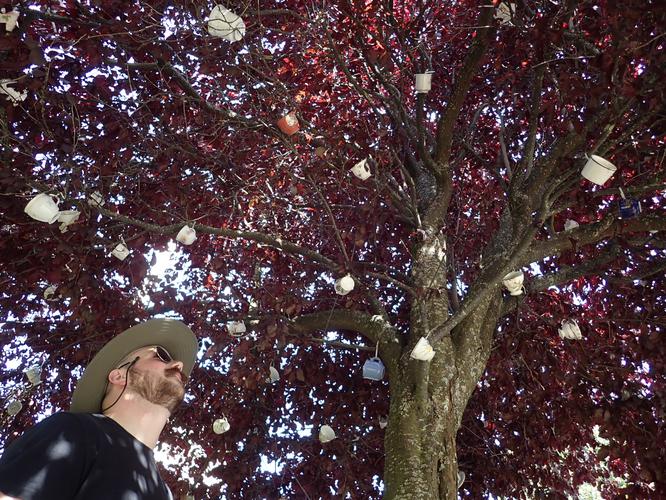
I'm Alex Kearney, I'm Science at the University of Alberta. I focus on Artificial Intelligence and Epistemology.

I'm Alex Kearney, I'm Science at the University of Alberta. I focus on Artificial Intelligence and Epistemology.

Went wandering through James Bay on the way back from Beacon Hill Park. We took a detour down a side-street and found one of the city trees had been converted into a tea-tree. ☕️ 🌳
I guess this was one of the most odd introductions to a course that I've had.
I thought people were joking when they said the first lecture was going to be at 7:30 A.M. in the costa coffee shop at wayverley station. Given how many people in my class complain about how disconnected we are from reality in our classroom, this was an ironic change.
The whole point of the meeting was to contextualize what we were doing. The point of the exercise was to consider how to change people interact with the city. Specifically, we were thinking about how to encourage people to walk through the city: an odd end to meet. Even more bizarre was the fact that we weren't given a reason why we wanted to get more people walking in the city centre, we just only had an end.
With this in mind, there are a plethora of reasons why you'd want to encourage the public to move. Concerns about general accessibility from an infrastructural and could be a valid theme. However, equally so could be revitalizing the downtown core from a cultural, economic, or environmental perspective.
They wanted to frame the project as a hackathon. They sure got it right; the malleability of the proposal lets people twist it to their own ends.
It was kind of odd, but interesting. Spending the past three years doing entirely science courses, it was challenging to step back for a moment and take a look at things from an arts perspective. For this assignment there is no perfect plan, there's no perfect specification. That being said, the whole course is supposed to be from a design from an informatics perspective, so we're using contextual empirical data to fuel our design decisions.
This looks like it's going to be a good course.